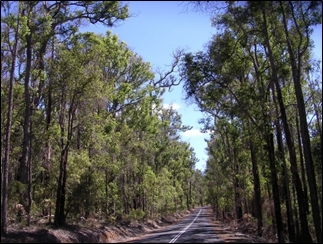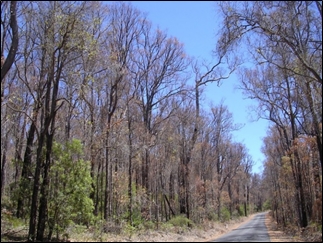PESTS AND DISEASES OF FORESTRY IN NEW ZEALAND
Gum leaf skeletoniser biological control agent takes shine to Napier
Scion is the leading provider of forest-related knowledge in New Zealand
Formerly known as the Forest Research Institute, Scion has been a leader in research relating to forest health for over 50 years. The Rotorua-based Crown Research Institute continues to provide science that will protect all forests from damage caused by insect pests, pathogens and weeds. The information presented below arises from these research activities.
From Forest Health News 267, June 2016.
With the eucalypt pest gum leaf skeletoniser (GLS), Uraba lugens, continuing to spread slowly southwards (FH News 251) it’s timely to provide an update on the distribution of its biological control agent, the parasitoid Cotesia urabae. While formal surveillance has not been done this year we know that GLS is distributed from Northland to Taupo, and there are populations in Napier and Nelson. Originally from Australia, Cotesia urabae was first introduced to New Zealand as a biological control agent for GLS in early 2011. Populations established following releases in Auckland in 2011, Whangarei in 2012, and Tauranga in 2012. We believe self-introduced populations appeared in Hamilton and Rotorua prior to additional small releases in those areas in 2015. We had no information on whether C. urabae has established in Napier where releases occurred in 2014 and 2015, or in Kerikeri where a very small release was made in 2015.



About 500 GLS larvae were collected from five sites in Auckland in winter 2014 by Gonzalo Avila, while he was a PhD student, to monitor establishment of C. urabae. Parasitoids were recovered from all five sites and 40% of GLS larvae collected produced parasitoid cocoons, indicating the C. urabae is well established in Auckland. To continue to improve our understanding of its distribution, Scion visiting intern student Luca Ehrminger made collections of GLS larvae in Napier, Hamilton and Rotorua last spring (October 2015) and summer (January 2016). The spring collections failed to find any parasitism by C. urabae, and it is likely that all parasitoids may have already emerged from that generation of GLS larvae. The summer collection was much more successful, to our relief! Cotesia urabae was recovered from GLS larvae collected from 3 out of 5 release sites in Napier and was found to be parasitising up to 46% of larvae at one site, and in the release site in Hamilton was parasitising up to 3% of larvae. No parasitoids were collected from the Rotorua site, and with GLS populations low in both Rotorua and Nelson it may be that the parasitoid is either not established or present at very low levels there. Over time, as C. urabae establishes and numbers increase it should begin to exert some control over GLS populations and spread naturally into new areas.
The main drivers behind wanting a successful biological control programme against GLS, was not only because high numbers of caterpillars can reduce growth of eucalypts, but also because they are a significant public health risk. If they come in contact with exposed human skin the larvae can cause a significant skin reaction from their urticating hairs. This can result from both live larvae and the dead shed skins left behind from moulting. Hence washing lines beneath infested eucalypts could inadvertently lead to bedding and clothing becoming contaminated with reaction-inducing hairs. If a reaction is suspected from the appearance of raised itchy welts, topical antihistamine crème should alleviate the condition. The introduction and establishment of C. urabae into more sites should reduce U. lugens populations and bring social and economic benefits.
Gonzalo Avila (Plant and Food Research), Luca Ehrminger, Belinda Gresham, Andrew Pugh and Toni Withers (Scion)
This information is intended for general interest only. It is not intended to be a substitute for specific specialist advice on any matter and should not be relied on for that purpose. Scion will not be liable for any direct, indirect, incidental, special, consequential or exemplary damages, loss of profits, or any other intangible losses that result from using the information provided on this site.
(Scion is the trading name of the New Zealand Forest Research Institute Limited.)



